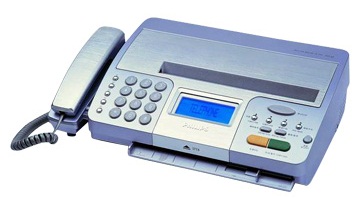Ofcom Backs Removal Of Fax Machine Lifeline

Regulator backs government decision to remove obligation for fax services under the Universal Service Order (USO) legislation
British communications watchdog Ofcom looks likely to back a government decision that could finally spell the death of an office icon – the fax machine.
The Guardian reported that Ofcom supports the removal of fax services from rules governing telecoms provision, known as the Universal Service Order (USO) legislation.
This is the legislation that forces BT to maintain and operate a declining number of telephone boxes or kiosks. But removing the obligation of fax services from USO rules could finally spell the end of the humble fax machine.
![]()
Fax obligation
According to the Guardian, Ofcom is minded to back the government’s decision to remove the requirement for fax services under the Universal Service Order (USO) legislation.
A few decades ago the fax machine was a vital piece of office equipment. Indeed many businesses in the 1980s, 1990s and up to the mid 2000s, had two dedicated telephone lines.
One phone number was for the voice line that connected to the office PABX for traditional phone calls. The other phone number was dedicated solely to the fax machine.
Read Silicon UK’s Tales In Tech History article on the fax machine.
The death of the fax machine has been a long time coming – ever since public switched telephone networks were switched to all-internet protocol (IP) telephony, which means that fax services will no longer work in the same way after the move to IP networks.
Ofcom’s move comes after the government amended the Electronic Communications (Universal Service) Order 2003 to remove facsimile services from the USO from 1 October 2022.
“DCMS officials conducted … investigations with the healthcare, tourism, legal, and energy sectors, and found that the use of fax was minimal and alternatives are being sought where its use still continues,” Hansard noted.
Ofcom meanwhile announced it is giving those who feel strongly that the fax machine should live to beep another day just one month to state their case.
“We are proposing to amend our rules to remove the requirement for BT and KCOM to provide fax services under the USO,” said Ofcom. “This will ensure that our rules reflect the requirements in the universal service legislation and are not unduly burdensome.”
Respondents have until 1 December to submit their arguments.
According to the Guardian, two respondents (the Communications Council UK trade body and a private individual) argued that the fax should be allowed to continue clinging quietly to life.
Their argument is that fax machines are still in use, particularly in certain professions including in the legal, medical and travel sectors.
There was also a concern that the removal of the fax obligation could have serious consequences for those who rely on other voice band data applications such as telecare alarms for elderly or vulnerable people.
Resistance to removing fax machines is not limited to the UK.
In July 2021, Japanese government ministers backed down after hundreds of government offices insisted that banishing the fax machine would be impossible.
History Of The Fax
The ability of a fax machine to send an image over a telephone wire is a surprisingly old invention, predating even Alexander Graham Bell’s invention of the telephone (patented in 1876).
A Scottish man, Alexander Bain, is officially credited with inventing the first technology to send an image over a wire. He worked on an experimental fax machine between 1843 and 1846. Essentially, he synchronized the movement of two pendulums through a clock, and with that motion scan a message on a line by line basis.
He was thus able to project a (poor quality) image to and from a cylinder. He filed a patent on 27 May 1843, for “improvements in producing and regulating electric currents and improvements in timepieces, and in electric printing, and signal telegraphs.”
Englishman Frederick Bakewell then improved upon Bain’s invention as he had replaced Bain’s pendulums with rotating cylinders that were synchronized, allowing for a clearer image through better synchronization.
Bakewell was able to demonstrate a working laboratory version at the 1851 World’s Fair in London, but it was never a commercial success.